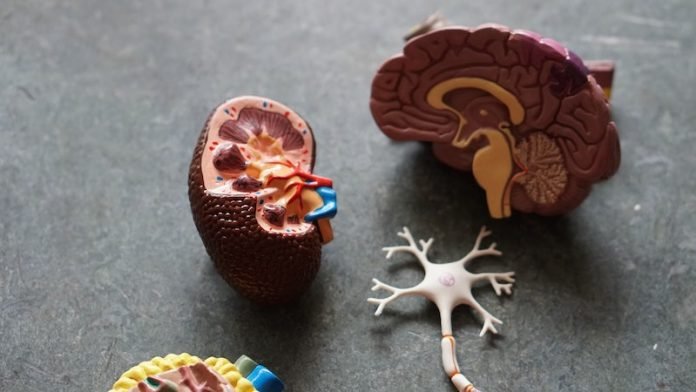
A recent study from the University of Alabama at Birmingham found that people with chronic kidney disease have a higher risk of heart disease and heart disease death.
They identified a pathological change that appears to link kidney disease to progressive heart disease.
The pathological change is coronary microvascular dysfunction or CMD.
This finding offers a potential treatment target, which could have wide benefits because 14% of the U.S. adult population has chronic kidney disease.
The study is published in Circulation. The lead author is Navkaranbir Bajaj, M.D.
CMD is a decreased blood flow in the small blood vessels inside the heart muscle that provides oxygen and fuel to feed the pumping heart.
In healthy hearts, visualized postmortem, these blood vessels look like a tight filigree network that fills the heart muscle tissue. A diseased postmortem heart has lost much of this network.
In living patients, however, those small blood vessels inside the heart muscle cannot be visualized; blood flow scans of living patients visualize only the larger, exterior coronary arteries.
In the study, the team measured coronary flow reserve, or CFR, via positron emission tomography.
CFR is the maximum increase in blood flow through the coronary arteries above the normal resting volume.
In the study, 352 people with chronic kidney disease all had healthy heart function measured by ejection fraction and none with signs of overt coronary artery disease.
The researchers measured CFR and also measured signs of subclinical heart dysfunction via deformation analysis with echocardiograms.
The patients were then followed about 4.4 years for major adverse cardiac events. A total of 108 patients had such major events, including death and hospitalization for non-fatal heart attack or heart failure.
The researchers found that CMD was a big predictor of abnormal mechanics of the left ventricle — the heart’s major pumping chamber — and a significant predictor of clinical risk of adverse cardiovascular outcomes.
The team then examined the relationship between impaired kidney function and heart disease.
It showed that CMD accounted for 19 to 24% of left ventricular diastolic dysfunction, 19 to 42% of left ventricular systolic dysfunction, and 32% of major adverse cardiovascular events.
These findings provide important new evidence that the development of severe microvascular dysfunction likely signals the transition from physiological to the pathological left ventricle and increases the risk of heart failure and death in patients with chronic kidney disease.
Copyright © 2020 Knowridge Science Report. All rights reserved.



